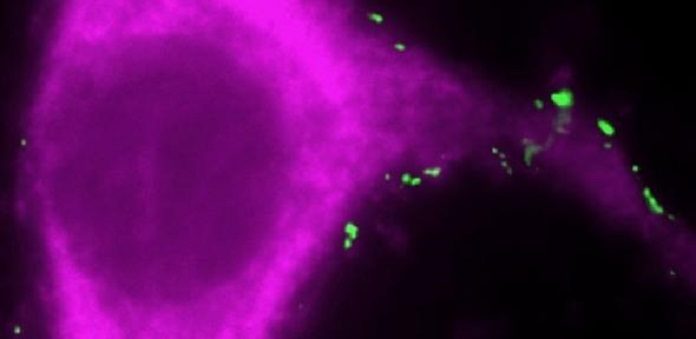Calcium can intervene in the connection between little membranous structures inside nerve endings, critical for neuronal motioning in the mind, and alpha-synuclein, the protein related to Parkinson’s illness. Abundance levels of either calcium or alpha-synuclein might begin the tie response that prompts the passing of cerebrum cells.
A new study by the University of Cambridge suggests that excess calcium in brain cells may lead to the formation of toxic clusters, which are the hallmark of Parkinson’s disease. The study also represents another step towards understanding how and why people develop Parkinson’s.
Senior author Dr Gabriele Kaminski Schierle from Cambridge’s Department of Chemical Engineering and Biotechnology said, “Alpha-synuclein is a very small protein with very little structure, and it needs to interact with other proteins or structures in order to become functional, which has made it difficult to study.”
During the study, scientists used a super-resolution microscopy technique to look inside cells to observe the behavior of alpha-synuclein. They even isolated synaptic vesicles, part of the nerve cells that store the neurotransmitters that send signals from one nerve cell to another.
Calcium mimics a major role in releasing neurotransmitters. The specialists watched that when calcium levels in the nerve cell increment, for example, upon neuronal flagging, the alpha-synuclein ties to synaptic vesicles at different focuses, making the vesicles meet up. This may show that the typical part of alpha-synuclein is to help the synthetic transmission of data crosswise over nerve cells.
Dr Janin Lautenschläger, the paper’s first author said, “This is the first time we’ve seen that calcium influences the way alpha-synuclein interact with synaptic vesicles. We think that alpha-synuclein is almost like a calcium sensor. In the presence of calcium, it changes its structure and how it interacts with its environment, which is likely very important for its normal function.”
Co-first author Dr Amberley Stephens said, “There is a fine balance of calcium and alpha-synuclein in the cell, and when there is too much of one or the other, the balance is tipped and aggregation begins, leading to Parkinson’s disease.”
The awkwardness can be caused by a hereditary multiplying of the measure of alpha-synuclein (quality duplication), an age-related moderating of the breakdown of overabundance protein, an expanded level of calcium in neurons that are delicate to Parkinson’s, or a related absence of a calcium buffering limit in these neurons.
Understanding the part of alpha-synuclein in physiological or neurotic procedures may help in the advancement of new medicines for Parkinson’s disease. One probability is that medication applicants created to piece calcium for use in coronary illness, for example, may likewise have potential against Parkinson’s disease.
Journal Reference
- Lautenschläger, J., Stephens, A. D., Fusco, G., Ströhl, F., Curry, N., Zacharopoulou, M., Michel, C. H., Laine, R., Nespovitaya, N., Fantham, M., Pinotsi, D., Zago, W., Fraser, P., Tandon, A., Rees, E., Phillips, J. J., De Simone, A., Kaminski, C. F., & Schierle, G. S. (2018). C-terminal calcium binding of α-synuclein modulates synaptic vesicle interaction. Nature Communications, 9(1), 1-13. DOI: 10.1038/s41467-018-03111-4
